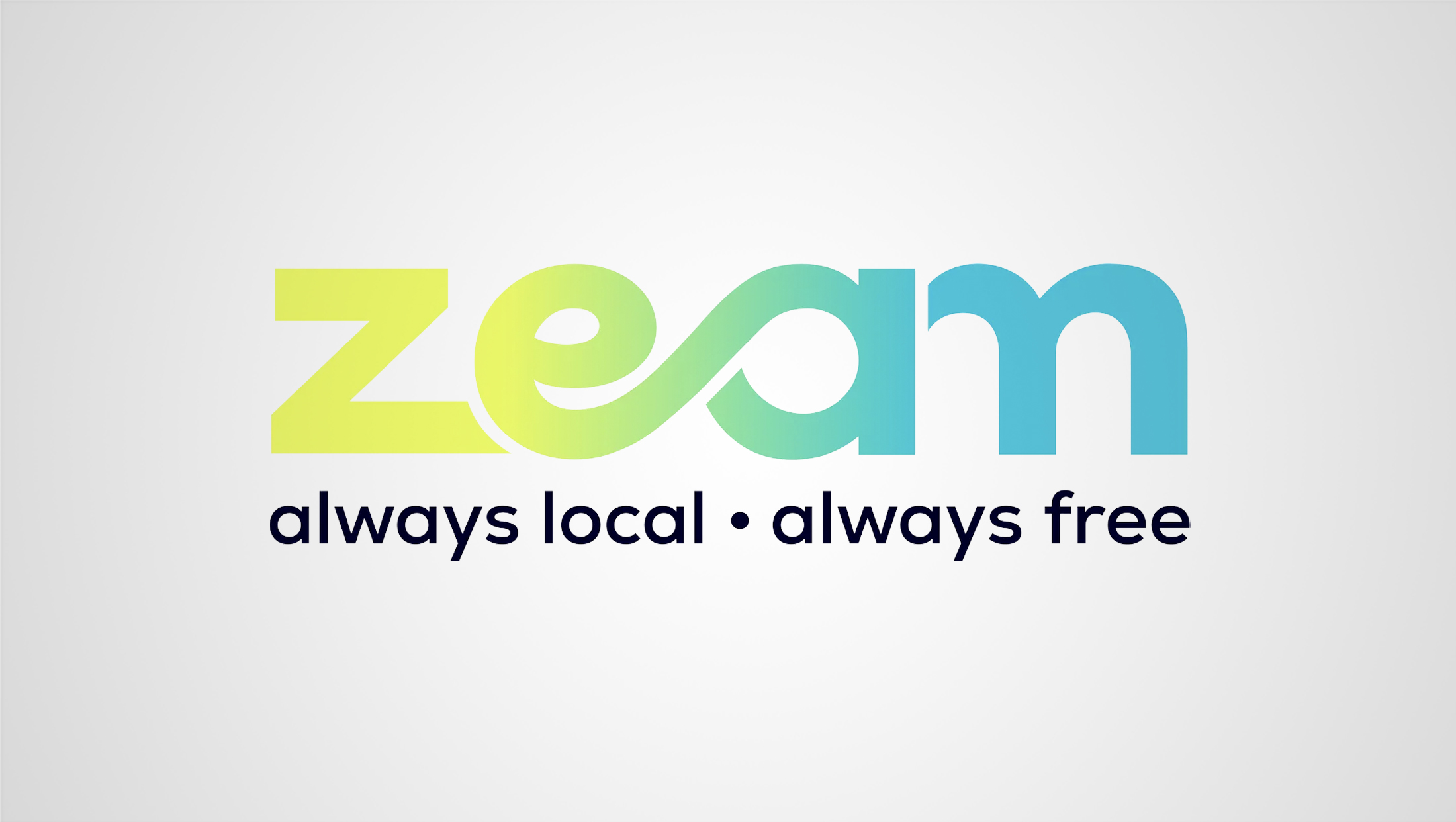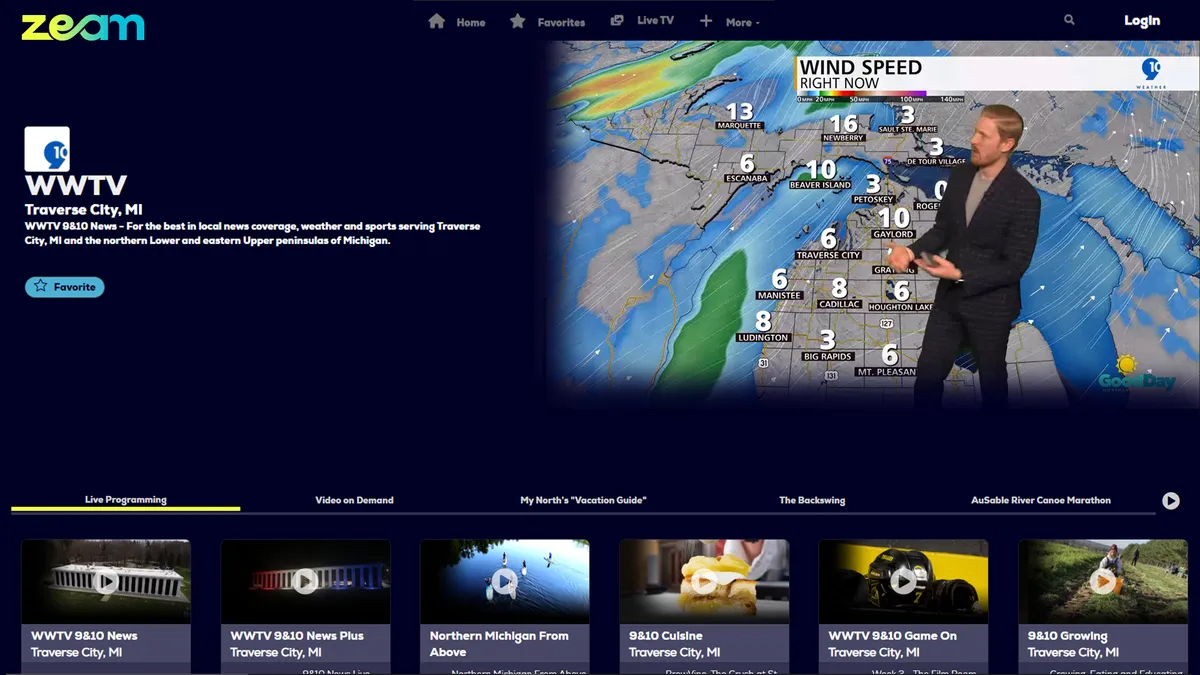Gray, Syncbak and NAB announce new local streaming platform Zeam

Subscribe to NCS for the latest news, project case studies and product announcements in broadcast technology, creative design and engineering delivered to your inbox.
A group of TV station owners, NAB and OTT technology company Syncbak are partnership to launch a new local streaming platform called Zeam.
Zeam plans on offering live and on-demand content, including news, sports and lifestyle programming, culled from over 300 local stations across the U.S.
Gray Television and Morgan Murphy Media are joining NAB and Syncbak to launch the service and have also signed on CBS Television Stations, Hearst and News-Press & Gazette stations, meaning it will have a local presence in about 80% of the country.
Syncbak and Gray previously partnered to launch streaming platform VUit in 2020. The service is reportedly profitable and helped build the groundwork for Zeam. Plans call for VUit to be replaced by the larger, more expansive Zeam offering.
More details about Zeam, including its launch date and availability, will be announced at a later time.
Zeam has signed actor John Stamos to star in commercials, which are expected to air during Super Bowl LVIII Feb. 11, 2024 on CBS. Zeam has bought advertising time during the game during local breaks by purchasing slots directly from local stations, a strategy that appears to be a nod to its dedication to local content and stations.
Zeam is also rolling out Zeam360, a van outfitted as a production studio on wheels. The vehicle will stop in nearly 30 markets before making its way to Las Vegas for the Super Bowl.

The streamer has also opened a studio in New York’s Times Square that will serve as both a production facility for content creators and a signpost advertising the service to passersby.
Zeam will operate under the FAST model, with it projecting 5 billion available advertising units. Syncbak will provide its existing advertising technology backbone to power national and local ad sales.
Zeam will join other similar streaming and OTT efforts launched by local station groups, including Allen Media’s Local Now and Sinclair Broadcast Group’s NewsOn, which both serve as a gateway for locally-produced content at stations across the country.
By signing up multiple station owners ahead of its launch, Zeam appears to be focused on being station group agnostic — meaning it could welcome aboard other groups in the future as a way to expand content.
The station groups involved so far currently stream a combination of live and on-demand content, including offering video clips on their websites, social media platforms and mobile and smart TV apps.
It’s not immediately clear if at least some of these videos might switch over to Zeam-branded players at some point, though such a move could be a valuable way to market the service.
CBS’s inclusion in Zeam is particularly interesting because it already offers its own national and regional linear news streams via the CBS News Streaming Network, formerly CBSN, and local versions in markets where it owns a CBS affiliate. CBS stations also offer on-demand content via various mobile and connected TV platforms as well as via embedded video players on news stories.
It’s not clear if Zeam will rely on the regional CBS streams for live content or offer a separate live feed.
At the same time the service was announced Feb. 1, 2024, a logo for Zeam along with the tagline “Always local. Always free.”
The made-up word “Zeam” likely was selected thanks to how it sounds a bit like “stream.” It also sounds a bit like “beam,” a word that also has connotations of content moving around through the air.
Using a name that starts with “Z” is likely influenced by a desire to target a younger demographic.
Words that start with “Z” also tend to stand out since there are so few that share that characteristic. There is another streaming offering called Xumo that, while starting with an “X,” is still pronounced as a “Z” (much like “xylophone”).
Like many new service names, it does appear that there are a few other Zeams out there, including a medical group and European autonomous transportation company.
Zeam logo
The service’s logo features a clean sans serif with customized lettering.
The “e” and the “a” in the logo are connected via a flowing stroke, possibly a nod to the word “stream” or a visual way to illustrate how content from local markets will flow into the platform.
The left vertical on the “m” is removed, meaning the right vertical on the “a” does double duty. The “Z,” meanwhile, has an extended base that ends with a curve that matches the flow of the “e.”
Negative space left inside of the “e” has a wave-like shape, while the letter “a” and the empty space in its center could be seen as suggesting the crest of a wave. The humps of the “m” also have the suggestion of flow.
Initial designs feature the logo with a gradient moving from yellow to blue with a stop in the green and teal neighborhood along the way.
Subscribe to NCS for the latest news, project case studies and product announcements in broadcast technology, creative design and engineering delivered to your inbox.





tags
CBS News and Stations, CBS News Streaming Network, Free Ad-Supported Streaming Television (FAST), Gray Television, hearst television, Local Now, Morgan Murphy Media, NAB, NewsOn, OTT, Sinclair Broadcast Group, streaming, Super Bowl LVIII, Syncbak, VUit, Zeam
categories
Broadcast Industry News, Heroes, Local News, Streaming